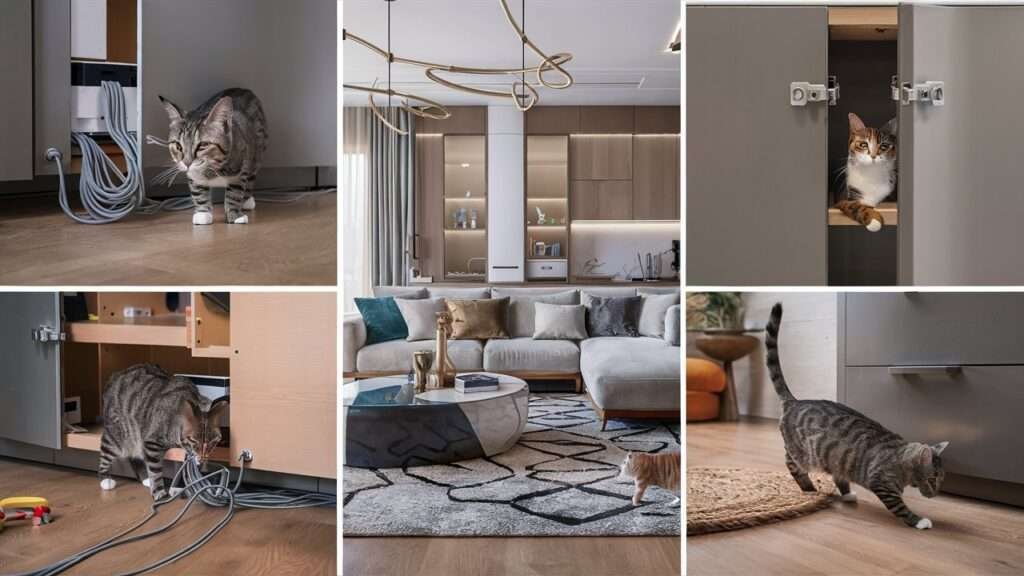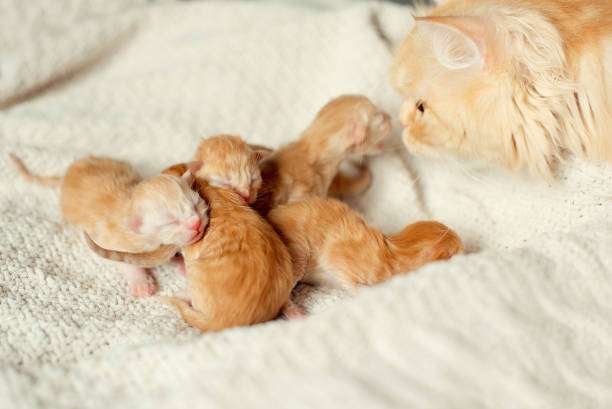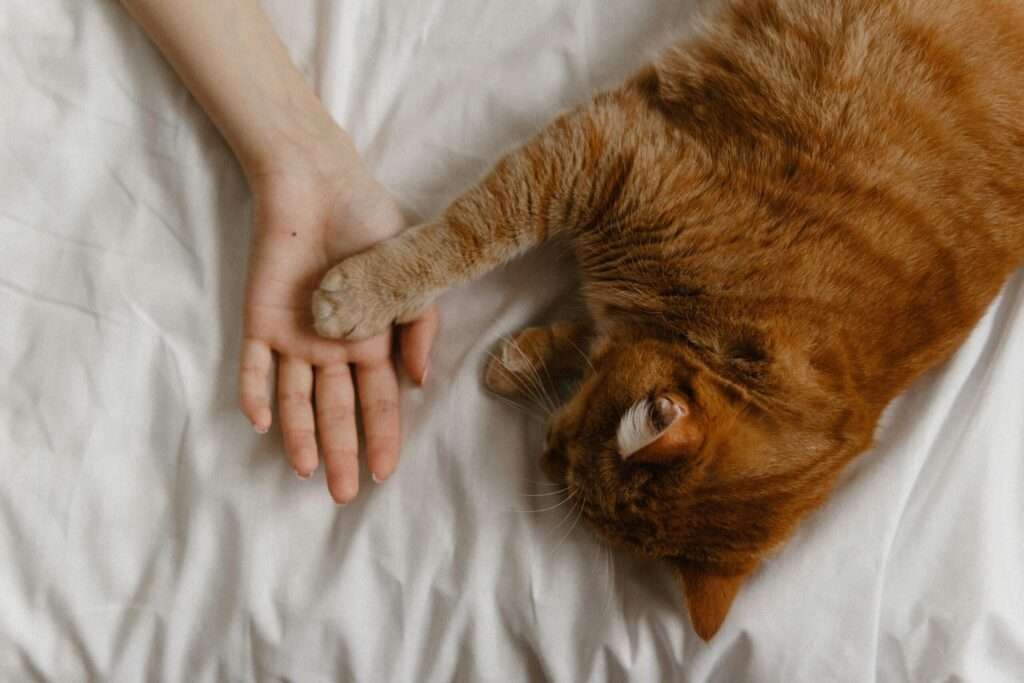What’s up, everybody? Ava Grace, founder of Cosmo Aurora, here with you, and today we are talking about safety for your cats. But this time, it’s about cat-proofing your home. And I’m telling you, I promise you, I guarantee you that there’s a bunch of stuff you didn’t think of. Almost everything that I’m going to list here either has happened to clients or I’ve heard stories about.
We start with the concept, as I’ve said before, that we have to treat cats in terms of our home design as we are designing for toddlers who can get to the ceiling, who can act like squirrel monkeys, sometimes flying with the greatest of ease and sometimes not. Toddler in terms of curiosity, toddler in terms of destructibility, and cat in terms of owning the sky and the ground. So, with that, let’s get to it.
Table of Contents
ToggleUnderstanding Catification
Before I go through this list, a few things I want to mention: the concept of catification. If you don’t know it yet, there are many videos on this channel and also two design books that I’ve written. I’ll talk about that later. We’re not just talking about a checklist of do’s and don’ts; it’s also about a more holistic take on design.
Before I launch into this list—and yes, folks, it’s a list—I want you to start thinking about who your cats are and how these pointers will apply or not apply to your specific cats.

Knowing Your Cat
So, who is your cat? Well, kittens really represent just about every troublemaking category I can think of, except for the fact that depending on how young the kitten is, they can only get so far in the sky. It’s their job in life to discover territory to better hunt, and that is something you just have to bear in mind as your kittens get older.
Is your cat the explorer, the one that’s just always finding new places you’re like, “Where’s Henry?” Are they the cat that I deem Dennis the Menace? And of course, that is a gender-neutral term. Is this the cat who knocks things off the shelves just to see them fall? Is your cat a senior? Seniors become much more compromised when it comes to not only their physical function but also their sensory abilities and their cognitive abilities. They’re going to be more apt to slip and slide, to fall off of places where at some point they might have been totally confident about getting up and down from.
Special needs cats don’t see themselves through the lens of others: “Oh, I’m a cat with only three legs.” They don’t do it; they just move through the world with three legs. Same thing goes for a hearing-impaired cat or a blind cat. We still have to design our homes from a cat-proofing perspective to accommodate and not invite disaster.
Catification Basics
Let’s start with catification. Cat-proofing occasion, cat-proof occasion, cat-proof vocation—anyway, you get my drift. It’s about the overall design of the house. There are just general things, big low-hanging design pieces of fruit for you guys to think about. One of them is child locks on cabinets. That’s easy, and we’re gonna go further into why you would do that. But what about things like your screens and your doors, your front doors, your back doors?
If you think that every screen that you buy for your house is cat-tested and cat-approved, you would be totally wrong. Make sure, number one, that when you push on a screen, it can’t come out. The second thing is, what is your screening made of? Pet screening is a grade of screen that is just more heavy-duty than, let’s face it, the cheap stuff which is basically there to keep out mosquitoes, not to keep in cats.
Another thing that I’ve just seen happen way too many times is when it comes to balconies. I let my cat out on the balcony because, you know, he can see the world, and he’s not leaving the house. But if you don’t think that your cat is going to maybe at some point jump up or climb or do whatever because he’s never done it before, don’t. Depending on where you live, renting, HOAs, things like that, they may not allow you to screen in your balcony. But if you can, then do it. If you can’t, don’t let your cat out there. Why tempt fate?

Securing Cords and Cabinets
Any cord at all should be covered because, again, even if your cat’s never done it before, there’s always that chance they’re going to walk up to a cord and be like, “Cord!” Protectors, which you can buy online very simply, are just hard plastic. They are bendable; you run your cords through it. They are pretty much bite-proof, although I’ve seen some pica cats be able to do some damage. In that case, you would spray it down with bitter apple, a little nasty-tasting spray. That way, even if they want to chew on the cord protector, it’s not a lot of return on investment there, let’s put it that way.
Start thinking also about, if you’ve got a multi-level house, banisters and landings that are high. I’ve seen it over and over. We have the landing, and then you have a railing that goes on top and a long drop down. Just make sure you’re thinking about how you’re going to prevent your cat from doing a tight wire walk on a railing like that. Underneath those places, think of a soft landing. Even if they land on their feet, if it’s a slippery surface, they’re just going to go straight out, and that will cause damage.
I have actually worked with having either netting or canvas or something like this that hangs right below that rail where your cat’s going to fall. Think about it in terms of a pole vaulter or what you would have on the sides of a trampoline, something like that. Look out for those banisters, look out for those landings. Also, start thinking about stairs and what happens if you just got those slick wood stairs. Cats will run and then they’ll run up and down the stairs, and the idea of them hitting those stairs and just losing balance and hurting themselves.

Managing Blind Cords and Candles
Blind cords—if you’ve got vertical blinds or curtains and they have those cords, make sure to tie them up. Don’t let them just dangle. That’s something they can really get tangled up in, and it’s a serious choking hazard. It’s a serious something they can wind up strangling themselves on, so hang those guys up.
If you have a cat or cats, you shouldn’t have lit candles from anywhere that they can access. A candle is either singed whiskers, singed fur, or knocking it over and starting a house fire.
I love the fact that you guys have been catifying your butts off. I see great pictures. In fact, in our books, we just use so many examples that you have come up with over the years. The one thing that I would have you be really careful about when it comes to catifying up high, the shelving, is just be careful how high you go in terms of an emergency. If you’ve got to get your cats out of the house and you can’t reach them, if you’ve got, you know, 12-foot ceilings, you might not want your cats to have access to the 11th foot.

Cat-Proofing Room by Room
Alright, so we’ve talked about knowing your cat, we’ve talked about sort of whole house thoughts from a catification and cat-proofing standpoint. Now, let’s go room to room.
Bathroom
One of the most obvious places to start when we talk about cat-proofing is the bathroom, because that’s where our medicines are. Cat-proofing the cabinet—what you might not have thought about is something like toothpaste. Toothpaste is completely toxic to your cats. Soap is another thing, totally toxic for the most part to cats. Anything with perfumes in them. Here’s something you didn’t think about: Are you using the kind of tissue paper or facial tissue that has things like lanolin in it or perfumes in them? If it’s going to wind up in your cat’s mouth, it could be a problem.
Another thing you might not have thought about is keeping your toilet lid down. Cats can fall into the toilet, and once in, sometimes they’ll have trouble getting out. And again, there are things in your toilet that are not meant to be digested, especially if you use any kind of deodorizer, any kind of additive to the toilet bowl. You want to make sure you keep the toilet lid closed for business, open for business, but closed for cat business. Gross!
One last thing that winds up in the bathroom—all different types of deodorizers and aromatherapy, those little sticks that we have in decorative jars. Just because it’s a bathroom, nah, those are just a quick way to poison your cats.
Kitchen
Tons of things in the kitchen can harm your cats. So let’s start with the most obvious, and that is the under-sink area, that place where you have all of your cleaners. Anything that’s usually toxic goes in that place, easily solved with child locks on the cabinet itself.
Let’s talk about the stove/oven. If you use your oven, just look—I know you’re going, “Well, how is my cat gonna get in the oven?” Well, cats are just heat-seeking missiles. If they’re that explorer, you know, they might wind up in there. So just look, let’s go up top and talk about the stove. Very simple, stove handle guards. They’re little locks that can go on the four burners or six burners, or how many you got, and it will keep them from being turned. You can get those little stove top covers, so at least if your cat jumps on the stove, it’s gonna be on a burner cover.
Another thing you might not have thought about is whether you keep things like onions or garlic or any of the foods that your cat might think are a toy. Just remember, you know, your kitchen is sort of a danger zone when it comes to cats. One of the things that I saw recently that really blew my mind was this woman who had a rice cooker. She was using the rice cooker, and her cat jumped on top, flipped the lid off, and got a nice little burn on their face. Just remember, your cat’s going to get up on everything. Just think about it.
Living Room
Another place that I think you might not think about is the living room. What’s the number one plant that kills cats? Lilies. There’s plenty of lists of toxic plants. But what about plastic plants? Plastic plants can still be toxic to your cats. So make sure that your fake plants are made with nontoxic materials. It’s just another thing you might not think about.
And then, of course, we talked about blind cords. This is a big one. If you’re using blinds, just get those cords tied up. Another place that I’ve seen just too many horror stories—just get them tied up.
And what about entertainment centers? One of the things I just see over and over is the mess of wires behind an entertainment center. Just take those wires, wrap them up, and put them through those cord protectors. Easy stuff. You can get them at any big box store. The point is, we’re talking about keeping them safe.
Alright guys, so that is your comprehensive list. This is the way to keep your cats safe and to cat-proof your house. If you’ve got anything to add, write it down below, share it with the community. And remember, by keeping your cats safe, you’re making their lives better, your lives better, and we’re creating that harmony that we all want to achieve.



